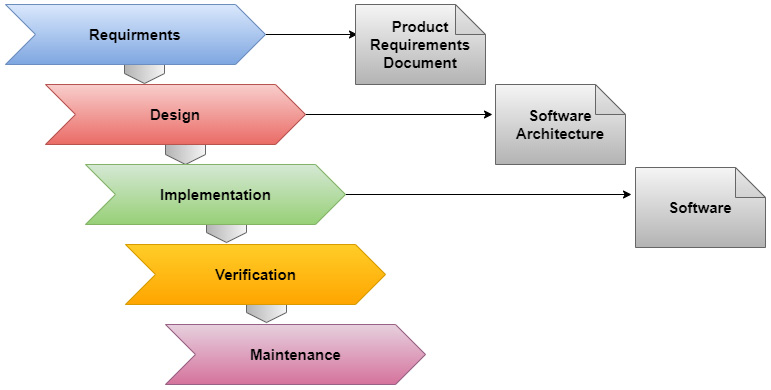Software development process methodologies
Since the 1960s, different methodologies have been developed to help system developers be more productive, on target, and create higher quality code. Here, we will look at some of the more essential methodologies – some that are in use today and some that have been superseded by newer and more flexible ones.
Waterfall development
The waterfall development model is one that almost everyone loves to hate. We will look at it anyway, as many newer methodologies have been developed as a reaction to it.
The reason it is hated, is that it will not take changing requirements into account.
In the waterfall model, several defined steps are completed, one preceding the next. An example of these steps can be seen in the following diagram:

Figure 11.11 – The steps in the waterfall model
This is how the model works:
- First, we gather all the requirements needed for this application.
- After...































































